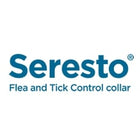
Fleas are more than just a nuisance—they can pose serious health risks to your dog. These tiny, fast-moving parasites feed on blood and transmit diseases that can lead to long-term health complications if left untreated.
In this blog, we’ll explore the common flea-borne diseases in dogs, how to identify their symptoms, and the best ways to protect your pet.
Common Flea-Borne Diseases in Dogs
1. Flea Allergy Dermatitis (FAD)
Flea allergy dermatitis (FAD) is one of the most common flea-related conditions in dogs. Some dogs are highly allergic to flea saliva, and just one bite can trigger intense itching, redness, and inflammation. Dogs with FAD often scratch excessively and chew their skin, and they may develop hair loss or secondary infections.
2. Tapeworm Infection (Dipylidium caninum)
Tapeworms are internal parasites that dogs can contract by accidentally swallowing a flea carrying the larvae, often during self-grooming. Though some dogs show no clear signs, others may lose weight, scoot or scratch their rear, or pass small worm segments in their feces or bedding.
3. Bartonellosis (Bartonella spp.)
This bacterial infection, commonly known as “cat scratch disease,” can also affect dogs. Fleas are one of the main carriers of Bartonella bacteria. In dogs, bartonellosis may lead to symptoms such as fever, swollen lymph nodes, muscle pain, and difficulty breathing. It can be particularly dangerous for dogs with weakened immune systems.
4. Anemia
Heavy flea infestations can result in anemia, particularly in young puppies or smaller dog breeds. When large numbers of fleas consume a dog’s blood, it can lead to a significant reduction in red blood cells. Signs to watch for include fatigue, pale gums, lethargy, and rapid breathing. Prompt veterinary care is essential.
How to Identify Flea-Borne Diseases
Since flea-borne illnesses can vary in symptoms and severity, monitoring your dog regularly for signs of discomfort or unusual behavior is important. Key symptoms to look for include:
- Persistent scratching or biting at the skin
- Red, inflamed, or scabbed skin
- Hair loss, especially around the base of the tail or along the inner thighs
- Visible fleas or flea dirt (tiny black specks)
- Lethargy or weakness
- Loss of appetite or weight
- Pale gums
- Worm segments in stool or around the anus
If you notice these symptoms, contact your veterinarian promptly for a proper diagnosis and treatment plan.
Effective Prevention Strategies
Preventing flea infestations is the best way to protect your dog from flea-borne diseases. Here are key steps you can take:
1. Use Flea Preventatives
Regular vet-approved flea treatments, such as oral tablets, topical solutions, or collars, are essential. Products like Simparica Trio, NexGard, and Frontline Plus effectively kill fleas and prevent new infestations. Always choose the right dosage based on your dog’s weight.
2. Treat Your Home and Yard
Fleas can hide in carpets, furniture, and pet bedding. Vacuum your home frequently, wash your dog’s bedding in hot water, and consider using flea sprays or foggers. Outdoor areas, especially shaded spots or dog houses, should also be treated with flea control products.
3. Maintain Regular Grooming
Brush your dog’s coat regularly to spot fleas early. Flea combs are particularly helpful in removing adult fleas and flea dirt. If you think your dog has fleas, giving them a bath using a mild flea shampoo can be an effective way to reduce the infestation.
4. Schedule Routine Vet Checkups
Regular veterinary visits ensure flea prevention methods work and help detect any early signs of flea-borne illnesses. Your vet may also suggest routine fecal exams to detect parasites like tapeworms.
Treatment Options for Flea-Borne Diseases
If your dog is diagnosed with a flea-borne disease, your vet will tailor the treatment based on the specific condition. This might include:
- Prescription flea control products
- Antibiotics (for bacterial infections like bartonellosis)
- Deworming medications (for tapeworms)
- Anti-inflammatory medications (for skin conditions)
- Supportive care like fluids and iron supplements (for anemia)
Early intervention speeds up recovery and reduces the risk of complications.
Final Thoughts
Flea-borne diseases are preventable with consistent care and the right treatments. Don’t wait until your dog starts scratching—being proactive about flea prevention can protect your furry friend from discomfort and serious illness.
For the best flea and tick treatment, heartworm prevention for dogs, and buying pet medicine online in Texas at the cheapest rate in the US, visit www.79pets.com and explore our range of trusted products.






